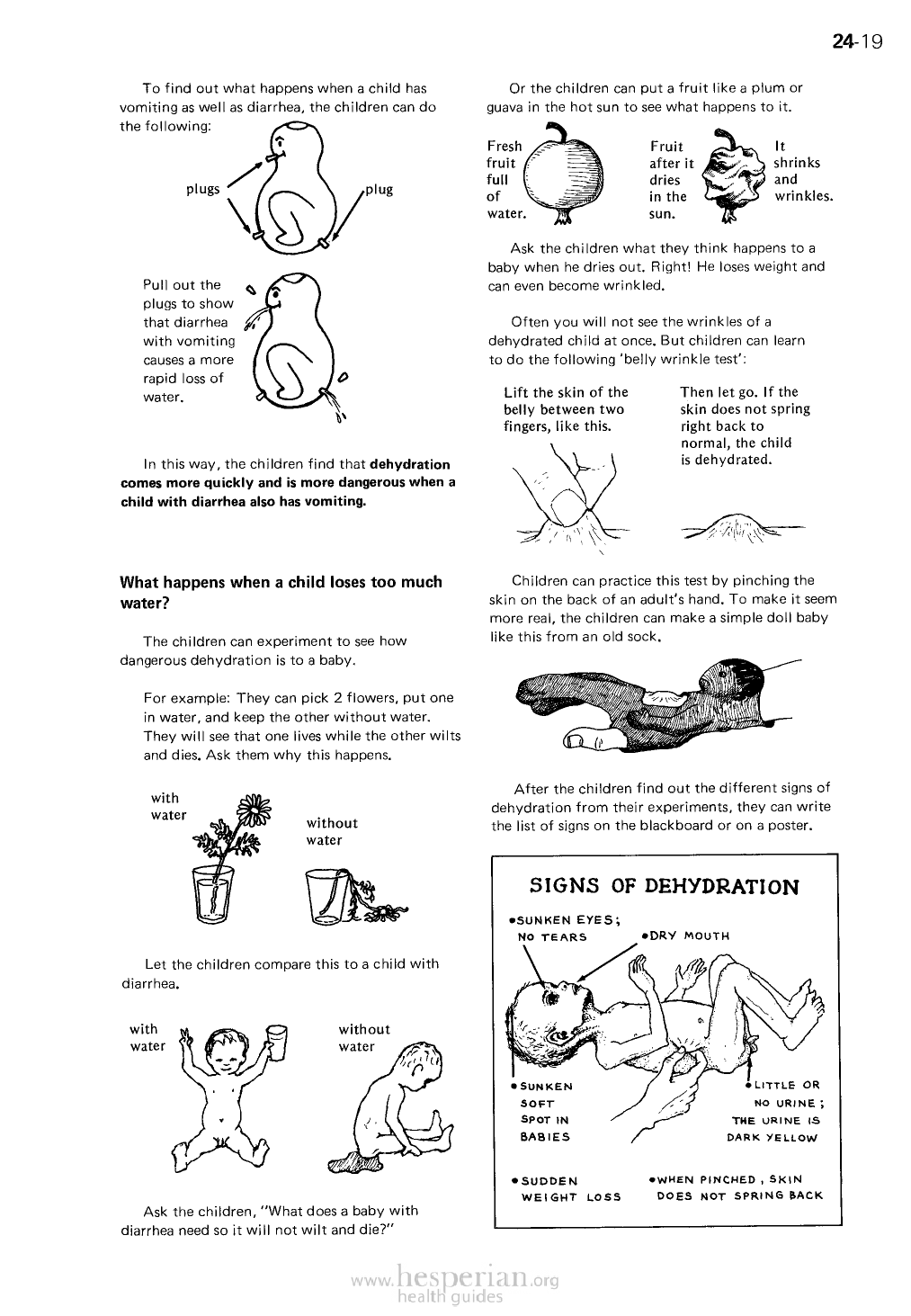
To find out what happens when a child has
vomiting as well as diarrhea, the children can do
the following;
plugs
plug
Pull out the
plugs to show
that diarrhea
with vomiting
causes a more
rapid loss of
water.
In this way, the children find that dehydration
comes more quickly and is more dangerous
when a child with diarrhea also has vomiting.
24-19
Or the children can put a fruit like a plum or
guava in the hot sun to see what happens to it.
Fresh
fruit
full
of
water.
Fruit
after it
dries
in the
sun.
It
shrinks
and
wrinkles.
Ask the children what they think happens to a
baby when he dries out. Right! He loses weight and
can even become wrinkled.
Often you will not see the wrinkles of a
dehydrated child at once. But children can learn to
do the following ‘belly wrinkle test’:
Lift the skin of the
belly between two
fingers, like this.
Then let go. If the
skin does not spring
right back to
normal, the child
is dehydrated.
What happens when a child loses too much
water?
The children can experiment to see how
dangerous dehydration is to a baby.
For example: They can pick 2 flowers, put
one in water, and keep the other without water.
They will see that one lives while the other wilts
and dies. Ask them why this happens.
with
water
without
water
Children can practice this test by pinching the
skin on the back of an adult’s hand. To make it seem
more real, the children can make a simple doll baby
like this from an old sock.
After the children find out the different signs of
dehydration from their experiments, they can write
the list of signs on the blackboard or on a poster.
Let the children compare this to a child with
diarrhea.
with
water
without
water
Ask the children, “What does a baby with
diarrhea need so it will not wilt and die?”